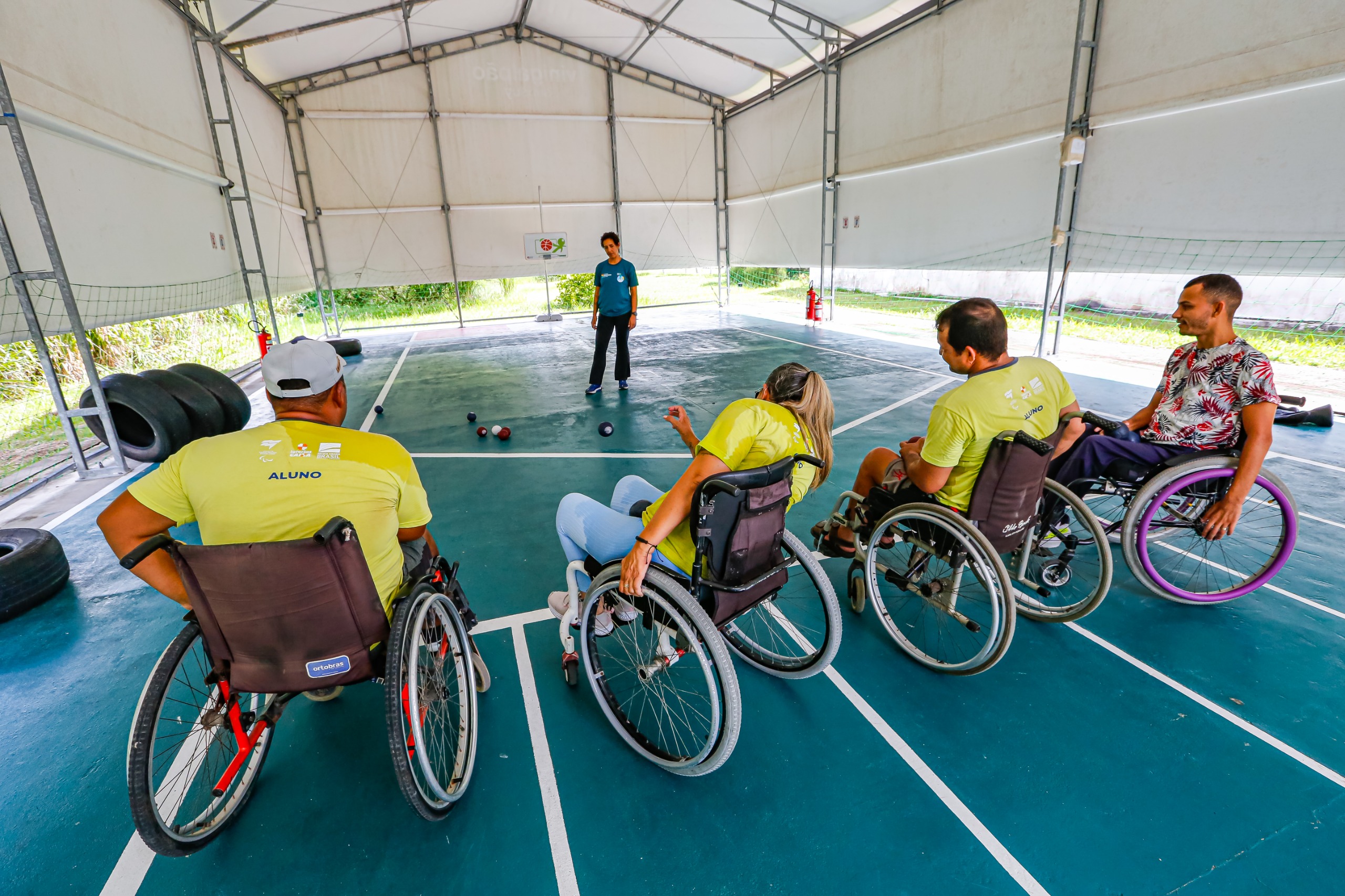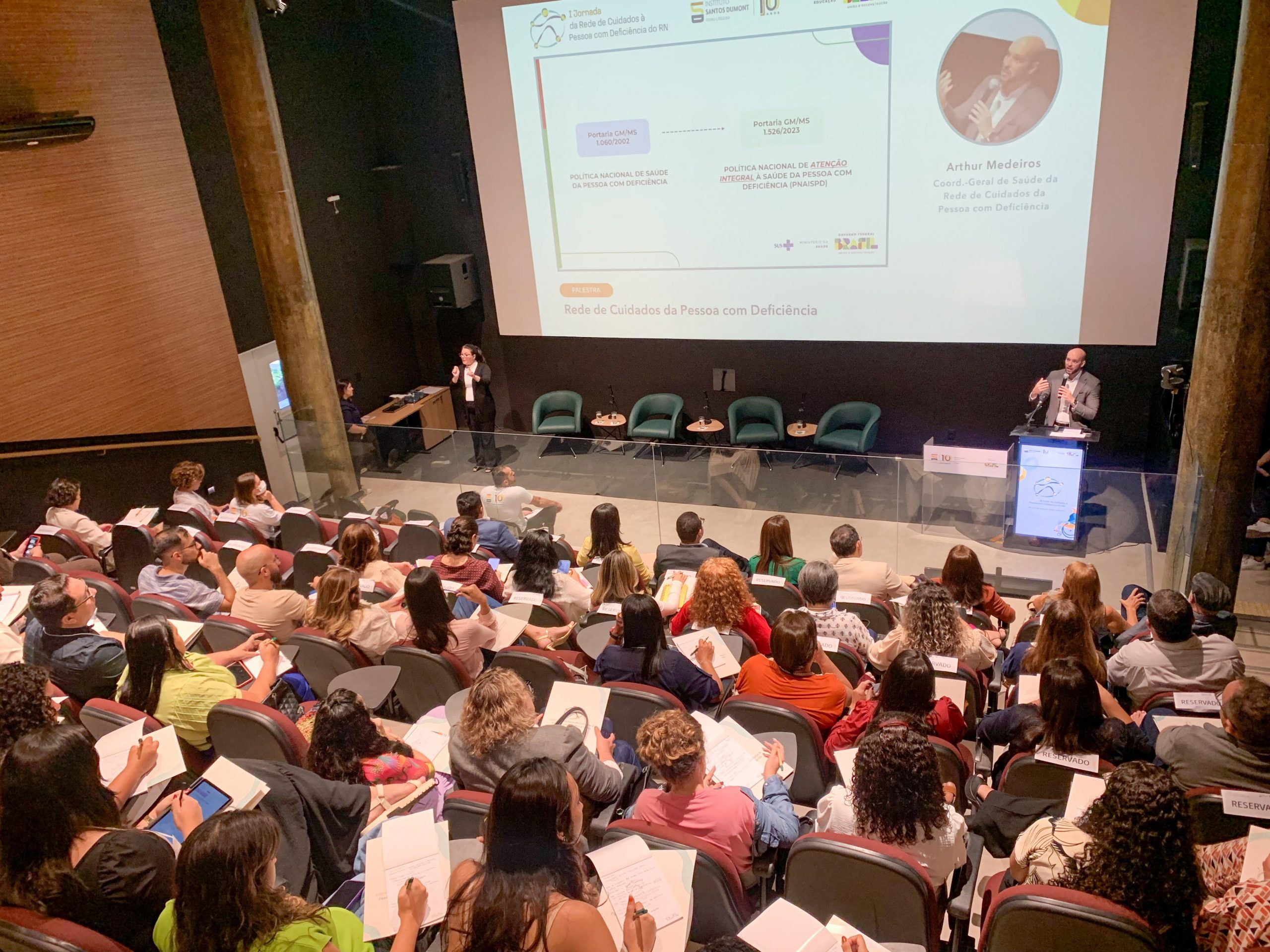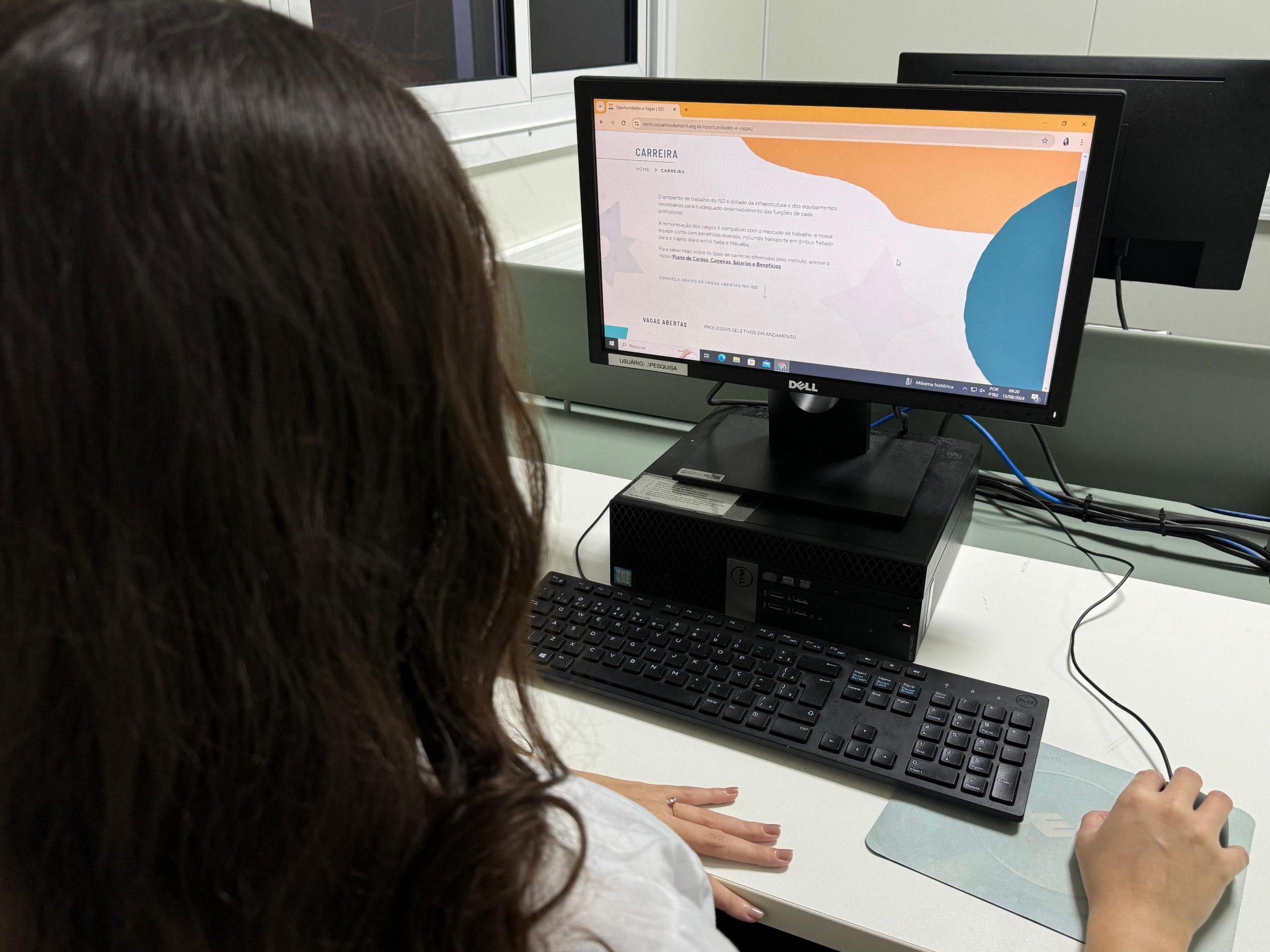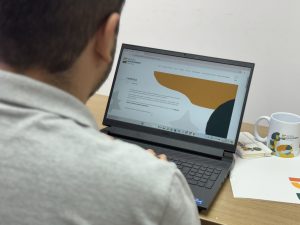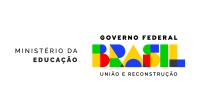Commitment to some degree of communication and language are conditions that characterize Autistic Spectrum Disorder (ASD). To mitigate the impacts of the lack of effective communication in the daily lives of people with this condition, the Santos Dumont Institute (ISD) participates in a Multicentric Research Project on Autism with researchers from the Federal University of Rio Grande do Norte (UFRN), Federal University da Paraíba (UFPB) and Federal University of Pernambuco (UFPE). This Wednesday (9/15), professors from the Speech Therapy Course at UFRN and UFPE were at the Anita Garibaldi Health Education and Research Center (Anita) to teach parents of children with autism the use of an augmented communication book and alternatively, one of the stages of the project.
The multidisciplinary speech therapist preceptor Luana Aprígio represents the Santos Dumont Institute in the project, which is also integrated by Professor Dr. Cíntia Salgado Azoni, from the Department of Phonoaudiology at UFRN; by Professor Dr. Ana Cristina Montenegro, from the Speech Therapy course at UFPE; by João Victor Silva, student of Phonoaudiology at UFRN, in addition to researchers from the Federal University of Paraíba. The research developed by the group will be applied to patients with autism treated at Anita, with a focus on children aged 2 to 5 years with difficulties in speech development.
“This partnership is important for establishing partnerships, expanding possibilities for interventions, making them more accessible to the general population and ensuring that this is applied to different realities. We need to expand access to treatment. This is one of the main objectives”, highlights Luana Aprígio.
Within the proposal of stimulating the development of speech, the researchers use an augmentative and alternative communication book with different figures, linked to the daily life of the child, parents or guardians to stimulate functional communication. “Through the book, the child can communicate functionally with different people, in different environments. About 25% to 30% of people with autism do not develop speech. We start to stimulate to develop verbal communication. If it doesn't happen, she learns to use the book with the pictures”, explains Ana Cristina Montenegro, who gave a lecture at Anita this Wednesday about the book.
Changes
Children with autism who cannot communicate have behavioral changes. To facilitate the communicative process, the book has images that represent feelings such as sadness, happiness, anger, among others. Also displayed are the letters of the alphabet, action verbs, questions such as when, where, place and time. The proposed use of the book makes the service accessible to everyone due to its low cost, unlike applications that need to be downloaded on computers, tablets or smartphones.
ISD's multidisciplinary speech therapist preceptor, Luana Aprigio, invited Professor Ana Cristina Montenegro to a class at Anita and joined the Santos Dumont Institute in the research. The project was enrolled in the ISD Ethics Committee so that the research practice takes place at UFPE and at Anita, involving undergraduate students from UFRN and the Multiprofessional Residency in Health Care for People with Disabilities, developed by the Santos Dumont Institute.
“The book is not just for children. It is also a communication system that can be used by parents and other communication partners to communicate with their child with autism. Communication breeds understanding. Children with autism have high visual ability. Some scientists call concrete thinkers. The book encourages the child to speak spontaneously, based on the organization of thought stimulated by the book”, emphasizes Ana Cristina Montenegro.
Practice
Six parents of children with autism attended at Anita were invited to participate in the lecture with the objective of teaching them how to use the book and, mainly, encouraging its use with the child. After the theoretical explanation, the researchers and the Speech Therapy student from UFRN taught the correct handling of the book.
“The child with autism who can talk will not stop talking because of alternative augmentative communication. In fact, it is one more stimulus to communicate and express emotions, ideas”, emphasizes Ana Cristina Montenegro.
autism spectrum disorder
Autism Spectrum Disorder (ASD) refers to a range of conditions characterized by some degree of impairment in social communication and restricted interests or repetitive movements.
ASD begins in childhood and persists into adolescence and adulthood. Signs are apparent in the first three years of life.
Individuals with autism spectrum disorder may have other co-occurring conditions, including epilepsy, depression, anxiety, and attention deficit hyperactivity disorder (ADHD). The level of functioning in individuals with ASD is variable, and is related to the level of support that this individual needs for his autonomy.
main facts
Autism spectrum disorders begin in childhood and persist throughout life.
While some people with ASD can live independently, others have significant difficulties and require lifelong care and support.
Evidence-based interventions, such as behavioral treatment and skills training programs for parents, can reduce difficulties in communication and social behavior, with a positive impact on the well-being and quality of life of people with ASD and their caregivers.
Interventions for people with autism spectrum disorder need to be accompanied by broad actions, making physical, social and attitudinal environments more accessible, inclusive and supportive.
Around the world, people with autism spectrum disorder are often subject to stigmatization, discrimination and human rights violations. Globally, access to services and support for these people is inadequate.
Source: World Health Organization (WHO)
Text: Ricardo Araújo / Ascom – ISD
Photo: Ricardo Araújo / Ascom – ISD
Communication Office
comunicacao@isd.org.br
(84) 99416-1880
Santos Dumont Institute (ISD)
It is a Social Organization linked to the Ministry of Education (MEC) and includes the Edmond and Lily Safra International Institute of Neurosciences and the Anita Garibaldi Health Education and Research Center, both in Macaíba. ISD's mission is to promote education for life, forming citizens through integrated teaching, research and extension actions, in addition to contributing to a fairer and more humane transformation of Brazilian social reality.





